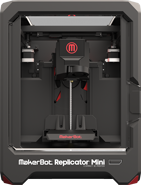3D printing of medical devices is becoming more commonplace in biomedical sciences. There has not been any official set of guidelines from the U.S. Food and Drug Administration (FDA), however. As a result of this increase in 3D printing, the FDA just issued a draft guidance for 3D-printed medical devices (or additive manufactured [AM] devices). The FDA has so far approved nearly 100 applications for lower-risk 3D printed medical devices, but the organization is seeking to make the application process more efficient. How will this affect physicians who wish to 3D-print a medical device in his or her own workplace?

The draft guidance stems from a 2014 public workshop and was created to help medical device manufacturers follow the FDA’s views on 3D printing. The FDA’s guidance for manufacturers “outline[s] technical considerations associated with AM processes, and recommendations for testing and characterization for devices that include at least one AM fabrication step.” It outlines how manufacturers need to think about device design, the effects of imaging (MRIs, CT scans, etc.), software workflow, material controls, post-processing validation of the biomedical devices, quality control and testing, and cleaning and sterilization procedures.
So how would this affect a hospital like MSK? The FDA draft guidance does not directly answer whether a physician that uses 3D printing at a hospital or clinic would be considered a “manufacturer,” and thus be subjected to or affected by these regulations. MedPageToday questions the vague language of the document, pointing out that the FDA says the regulations “may apply” to point of care manufactures such as a physician printing a medical device in an office or hospital. It is unclear how the regulations will factor in physician use. Regardless, this draft guidance will be a major step towards regulation of 3D printed biomedical objects and will illustrate what the expectations are for 3D printed medical devices. Additionally, the FDA is allowing 90 days for the public to submit comments on the draft guidance. Those wishing to find out more information on 3D printing for clinical settings and their research can check out the MSK library’s guide to the MSK Makerspace and the MSK Maker Community.